What Can Cause Dogs to Have Fits
Dogs can have many positive effects on the lives of their owners. They influence social, emotional, and cognitive development in children, promote an active lifestyle, provide companionship, and have even been able to detect oncoming epileptic seizures or the presence of certain cancers. Dogs can also help to relieve stress and anxiety in people. Around 38% of US households are estimated to have one or more dogs.
Although dogs can be beneficial to the health and wellbeing of their owners, people should be aware that dogs of any age, including puppies, can sometimes carry harmful germs that can make people sick. Germs from dogs can cause a variety of illnesses, from minor skin infections to serious illnesses. One of the best ways you can protect yourself from getting sick is to thoroughly wash your hands after handling, caring for, feeding, or cleaning up after dogs.
By providing your dog with routine veterinary care and following the Healthy People tips, you are less likely to get sick from touching or interacting with a dog.
Read below to learn about diseases that can be spread by dogs. Visit the Healthy People section to learn about staying healthy around dogs.
Brucellosis is a bacterial disease caused by contact with infected animals and contaminated animal products like raw milk.
How it spreads: The most common way people get brucellosis is by eating or drinking unpasteurized/raw dairy products. People can also get brucellosis by coming in contact with infected animals or contaminated animal products (like placenta and birthing fluids) and getting the bacteria in skin wounds or mucus membranes. Animals that are most commonly infected include sheep, cattle, goats, pigs, and dogs.
Who is at risk: Anyone can get brucellosis, but people who work closely with animals or drink raw milk may be more at risk. Brucellosis is most commonly found in Mexico, Central and South America, Eastern Europe, Asia, Africa, the Caribbean, the Middle Easy, and the Mediterranean Basin. The risk of getting brucellosis from a dog is low for most pet owners. However, dog breeders and veterinary staff are more at risk for brucellosis since they may be exposed to blood, tissues, and fluids from the birthing process.
Signs in dogs: Most dogs infected with brucellosis show no signs of illness. However, brucellosis in dogs can lead to infertility, abortions, and infections of the reproductive organs. In some dogs, brucellosis can cause an infection of the spinal bones and discs called diskospondylitis, or inflammation in the eye or brain.
Symptoms in people: People with brucellosis will usually become sick within 6-8 weeks of exposure. Sick people will have flu-like symptoms that last 2-4 weeks. Sometimes brucellosis can become a chronic illness that can be difficult to treat. Occasionally, brucellosis can affect reproductive organs and cause miscarriage in pregnant women.
Campylobacter are bacteria that can make people and animals sick with a disease called campylobacteriosis.
How it spreads: Campylobacter most often spread to animals and people through the feces (poop) of infected animals, contaminated food or water, or the environment. People can become infected if they don't wash their hands after touching an animal or its poop, food, toys, or habitats.
Who is at risk: Anyone can get a Campylobacter infection, but children younger than 5 years of age, adults 65 years of age and older, and people with weakened immune systems are more at risk for serious illness.
Signs in dogs: Dogs and puppies infected with Campylobacter might show no signs of infection or they can have diarrhea.
Symptoms in people: People can have diarrhea (often bloody), fever, and abdominal cramps. The diarrhea may be accompanied by nausea and vomiting. Symptoms usually start within 2–5 days after infection and last about 1 week.
Capnocytophaga is a common type of bacteria that normally lives in the mouths of dogs and cats. These bacteria do not make dogs or cats sick, but very rarely, they can spread to people.
How it spreads: Rarely, Capnocytophaga can spread to people through bites, scratches, or close contact with a dog or cat that is infected. Most people who have contact with dogs and cats do not become sick.
Who is at risk: People with weakened immune systems (for example, people with cancer, people who do not have a spleen, or those taking certain medications) are at greater risk of becoming sick.
Signs in dogs: Capnocytophaga bacteria are common in the mouths of dogs and cats but do not cause them to get sick.
Symptoms in people: People may start to show symptoms within 1-14 days after infection with Capnocytophaga. Symptoms include blisters, swelling, redness, or pain around the area of the bite, fever, diarrhea, vomiting, headache, and muscle or joint pain. Rarely, serious complications can occur, including sepsis (a blood infection), gangrene, or kidney failure.
Cryptosporidiosis is a parasitic disease caused by the germ Cryptosporidium (or Crypto for short), which is spread by swallowing poop from an infected person or animal.
How it spreads: Crypto spreads through swallowing poop containing the germ after contact with an infected person or animal, or through food, water, or the environment contaminated with poop. The risk of getting Crypto from animals is hard to predict, because many animals carry the parasite without showing any signs of illness.
Who is at risk: Anyone can been infected with Crypto, but people with weakened immune systems are more at risk, especially for severe disease.
Signs in dogs: Crypto in dogs is rare, but dogs can carry the parasite without showing any signs of illness. If dogs are affected by the parasite, they will typically have watery diarrhea.
Symptoms in people: Symptoms include profuse, watery diarrhea with cramping, abdominal pain, vomiting, and nausea. The symptoms typically resolve within 1–2 weeks.
The flea tapeworm is a parasite spread to dogs, as well as cats and people, through the ingestion of infected fleas. This parasite is common in dogs but rarely causes illness in other pets or people.
How it spreads: The tapeworm spreads when a dog or person swallows an infected flea. Dogs may swallow fleas when grooming. Treating flea infestations and using routine flea preventatives can help prevent infection.
Who is at risk: The risk of a person getting this tapeworm is extremely low because you must swallow a flea to become infected. Most cases occur in children.
Signs in dogs: Tapeworms are usually not harmful for dogs and usually don't cause illness. The parasite can sometimes be detected by finding rice-like segments of the tapeworm moving near the dog's anus or in fresh poop. If a dog is heavily infected, it may lose weight or have gastrointestinal issues. Sometimes, an infected dog will "scoot" or drag its bottom across the ground to help relieve irritation.
Symptoms in people: Dipylidium infection is rare in people and usually doesn't cause any symptoms. Sometimes the infection can be detected by finding rice-like segments of the tapeworm crawling near the anus or in fresh poop.
Echinococcosis is a parasitic disease caused by infection with tiny Echinococcus tapeworms. Echinococcosis is rare in the United States but can be serious. Adult Echinococcus tapeworms are only found in dogs and related animals. People can be infected with Echinococcus larvae, the immature stage of the tapeworm that cause cysts in body organs.
How it spreads: Dogs shed Echinococcus eggs in their poop. The parasite spreads to people through eating or drinking food or water that is contaminated with the poop of an infected dog, or by touching a dog that has eggs of the parasite in its fur. Dogs become infected by eating tissue of infected sheep or goats.
Who is at risk: Anyone can get echinococcosis but people who live in areas where the parasite is common or people that work with farm animals are at a higher risk of infection. Echinococcus is found in Africa, Europe, Asia, the Middle East, Central and South America, and in rare cases, North America.
Signs in dogs: Dogs rarely show signs of disease and it is possible to be infected and have no signs of illness. However, if they are infected with a large number of tapeworms, they can have mild diarrhea, a variable appetite, a shaggy coat, or irritability.
Symptoms in people: Although Echinococcus larvae can invade many different organs of the body, most people who are infected with the disease may not have any symptoms of illness for years. The rate at which symptoms appear depends on where the cyst is located. Symptoms start when the slow-growing cysts become large enough to press on the organs they have invaded or when the cysts rupture. The cysts grow slowly in several different organs of the body, most commonly the liver and lungs.
Giardia is a parasite found on surfaces or in water, food, or soil that has been contaminated by poop of an infected person or animal, including dogs.
How it spreads: Giardia spreads through swallowing microscopic poop containing the parasite following contact with an infected person or animal or by drinking water or eating food that has been contaminated with poop from infected people or animals, including dogs.
Who is at risk: The risk of getting Giardia from dogs is small. The exact type of Giardia that makes people sick is usually not the same that infects dogs. Anyone can get Giardia, but the following groups have a higher risk:
- People who drink untreated water from a river, lake, stream, or spring
- People who swim in natural bodies of water.
- International travelers
- People who have contact with children in diapers
- People who have contact with poop during sexual contact with someone who is infected with Giardia
Signs in dogs: Dogs with Giardia may have diarrhea, greasy stools, or become dehydrated.
Symptoms in people: People with Giardia may experience diarrhea, gas, abdominal discomfort, nausea, and vomiting. However, it is possible to be infected and have no signs of illness.
Hookworms are small worms that can spread through contact with contaminated soil or sand.
How it spreads: People can become infected with hookworms by walking barefoot, kneeling, or sitting on ground that is contaminated with poop of infected animals. Dogs can be infected by hookworms penetrating their skin or ingesting the parasite from the environment. Also, puppies can be infected before birth or through drinking their mother's milk or colostrum.
Who is at risk: Anyone can get dog hookworm infection. Hookworms are most commonly found in tropical and subtropical regions but are also present in the United States.
Signs in dogs: Young puppies are most often affected by hookworm and might have dark, bloody stool, weight loss, and anemia. Severe infections in some puppies can lead to death.
Symptoms in people: People with dog hookworm infection can experience an itchy reaction and a red squiggly line may appear where the parasite larvae migrated under the skin. Unlike human hookworms, dog hookworms don't survive in an infected person, so symptoms typically resolve within 4-6 weeks without medical treatment. Rarely, the hookworm can migrate to the intestines to cause inflammation in the intestines. These infections are treated with medication to kill the hookworm (anthelmintics).
Leptospirosis is a bacterial disease that can affect people and animals. Many kinds of animals can carry the bacteria in their urine, including dogs. Dogs can be vaccinated to protect against some strains of leptospirosis.
How it spreads: The bacteria that cause leptospirosis spread through the urine of infected animals, which can get into water or soil and survive there for weeks to months. Some animals that can spread leptospirosis include cattle, pigs, horses, dogs, rodents, and wild animals. People get infected through contact with urine or other body fluids (except saliva) from infected animals, or through contact with water, soil, or other materials (such as animal bedding) contaminated with urine from infected animals.
Who is at risk: Leptospirosis occurs worldwide, but is most common in tropical and subtropical climates. It has been associated with contact with infected animals and activities in contaminated lakes and rivers, such as swimming, wading, kayaking, and rafting. It is also a risk for people in certain jobs that involve contact with animals or their waste, like farmers, sewer workers, slaughterhouse workers, and veterinarians. People working directly with dogs or cleaning up after them may be at risk for leptospirosis.
Signs in dogs: Dogs infected with leptospirosis may not show any signs of illness. For dogs that do show symptoms, they could include: fever, tiredness, vomiting, diarrhea, lack of appetite, conjunctivitis (red eyes), jaundice (yellow skin or eyes), or changes in urination (more than normal, less than normal, or trouble urinating at all). Some dogs with severe illness, such as kidney or liver failure, or bleeding of the lungs, may die from the infection.
Symptoms in people: People with leptospirosis might not have any symptoms, but those who do will usually become sick within 2 days to 4 weeks of exposure and can have high fever, headache, chills, muscle aches, vomiting, jaundice, conjunctivitis (red eyes), abdominal pain, diarrhea, or a rash. A small number of people with leptospirosis can have more severe disease, such as liver and kidney failure, hemorrhagic pneumonia, and even death. Early treatment with appropriate antibiotics is important and can reduce the duration and severity of illness.
Staphylococcus aureus is a common type of a bacteria normally found on the skin of people and animals. MRSA is Staphylococcus aureus bacteria that have become resistant to some antibiotics. MRSA can cause a variety of infections, including skin infections, pneumonia (lung infection), and other problems.
How it spreads: MRSA can spread between people and animals through direct contact (touching). Even dogs that aren't sick can sometimes carry MRSA and spread it to people.
Who is at risk: Anyone can get a MRSA infection. Athletes, daycare and school students, military personnel in barracks, and those who receive inpatient medical care or have surgery or medical devices inserted in their body are at higher risk of MRSA infection.
Signs in dogs: Dogs often don't show signs of MRSA infection, but when they do, they can develop skin, respiratory, and urinary tract infections.
Symptoms in people: Most people with MRSA will carry it without symptoms. For people who develop a MRSA infection, the most common type is a skin infection. If left untreated, MRSA can rarely spread to the lungs or bloodstream and become life threatening.
Plague is a disease caused by Yersinia pestis, bacteria that can cause illness in people and animals. In the western United States, fleas can pass the bacteria to rodents and other small animals. People and pets (dogs, cats) are at risk when they are bitten by these fleas. Dogs and cats can get sick with plague and can spread the infection to humans.
How it spreads: People and animals are most commonly infected by flea bites, but touching live or dead plague-infected animals can also cause illness. People can also become infected by inhaling infectious droplets that a sick dog or cat has coughed into the air.
Who is at risk: People that live in or travel to the western United States, particularly in rural areas, may be at risk. In addition, people with animal contact (for example sleeping with infected pets in the bed) and hunters may be at risk.
Signs in dogs: Dogs infected with Y. pestis do not always get sick, but if they do, they can develop severe illness or die from the infection. Signs of plague in dogs may include fever, low appetite, low energy, swollen lymph nodes, vomiting, and diarrhea. Dogs, similar to cats, can develop plague pneumonia and may cough or have difficulty breathing. Owners should reduce contact with sick pets and seek veterinary care as soon as possible.
Symptoms in people: Bubonic plague is the most common form in people. Symptoms of bubonic plague include painful, swollen lymph nodes, sudden onset of high fever, chills, headache, and weakness. Other forms of plague, including septicemic plague and plague pneumonia, can cause more severe symptoms.
Rabies is a deadly neurologic disease caused by a virus that spreads primarily through bites of infected animals. Dog owners should get their dogs vaccinated against rabies. Rabies vaccines should be boostered regularly, according to the labeled duration of the vaccine used.
How it spreads: Rabies spreads through contact with saliva or brain/nervous system tissue from an infected animal, usually through scratches or bites.
Who is at risk: Rabies in people and domestic animals is rare in the United States because of successful animal control and vaccination programs, but the disease is still found in wild animals such as bats, foxes, raccoons, and skunks. You or your pet could be at risk for rabies if you come into contact with an infected animal.
Signs in dogs: Dogs with rabies can have different symptoms. They may show sudden behavioral changes and progressive paralysis. They may also show signs of restlessness, panting, voice changes, or poor appetite. They may attack other animals, people, or objects. Animals with rabies typically die within a few days after symptoms start.
Symptoms in people: Symptoms of rabies in people can appear days to months after exposure. Once symptoms appear, it is almost always too late for treatment, so if you have been bitten by a dog or another animal, you should wash the wound immediately and see a healthcare provider right away and let them know about the animal bite.
Ringworm is an infection caused by a fungus that can infect the skin, hair, or nails of people and animals.
How it spreads: Ringworm spreads by touching an infected animal or person. It can also spread by touching objects or surfaces contaminated with the fungus, like blankets and towels.
Who is at risk: Anyone can get ringworm, but people with weakened immune systems are at higher risk.
Signs in dogs: Dogs with ringworm infection develop bald, scaly patches with broken hairs. They may also develop acne-like bumps on the skin. The areas usually affected include ear tips, face, tail, and feet. Some dogs may carry the fungus and not show any signs of disease.
Symptoms in people: Ringworm infections in people are usually itchy and can appear on almost any part of the body, usually 1-2 weeks after exposure. Redness, scaling, cracking of the skin, or a ring-shaped rash may occur. If the infection is on the scalp or beard, hair may fall out. Infected nails can become discolored, thick, or could crumble.
The roundworm is an internal parasite that can cause an infection called toxocariasis. Roundworms are most commonly found in the intestines of dogs.
How it spreads: Dogs shed roundworm eggs in their poop. People and dogs can become infected with roundworms by swallowing roundworm eggs from the environment, such as dirt contaminated with poop. Also, puppies can be infected before birth or through drinking their mother's milk or colostrum.
Who is at risk: Anyone can become infected with roundworm. People can get infected if they don't wash their hands after touching an animal or its poop, food, toys, or habitats.
Signs in dogs: Puppies with roundworm usually do not develop and grow well, have a dull coat, and have a pot-bellied appearance. Infected dogs may also have coughing and diarrhea. Heavy infections in puppies can cause death.
Symptoms in people: There are two types of illness associated with roundworm in people. Ocular toxocariasis happens when roundworm larvae migrate to the eye and can cause vision loss, eye inflammation, or damage to the retina. Typically, only one eye is affected. Visceral toxocariasis happens when the roundworm larvae migrate to various body organs (like the liver, lungs, or central nervous system) and can cause fever, fatigue, coughing or wheezing, or abdominal pain.
Salmonellosis is caused bySalmonella bacteria, which are most commonly spread through contaminated food.Salmonella can also spread from animals, including dogs, to people and from people to people.
How it spreads: Salmonella live in the intestines of people and animals. People and animals can get Salmonella by eating contaminated food, drinking contaminated water, or by touching infected animals, their poop, or contaminated items or surfaces. Dogs and other animals that can carry Salmonella can appear healthy, but still be shedding germs that can make people sick. People can get infected if they don't wash their hands right after touching an animal or its poop, food, toys, habitats, or being in areas where animals live and roam even if they did not touch the animal. Salmonella can also contaminate pet food, including raw food, some brands of dry food, treats, and chew toys like pig ears.
Who is at risk: Anyone can get a Salmonella infection, but children younger than 5 years of age, adults 65 years of age and older, and people with weakened immune systems are more at risk for serious illness.
Signs in dogs: Dogs typically don't get sick from Salmonella infection, but those that do may have diarrhea, vomiting, fever, or loss of appetite and may not be as active as usual.
Symptoms in people: People may experience diarrhea, fever, and abdominal cramps. Symptoms usually start within 6 hours–6 days after infection and last 4–7 days. Some people's illness may be so severe that they need to be hospitalized.
Sarcoptic mange is a parasitic skin disease caused by a tiny mite. Mites spread between animals through close contact.
How it spreads: Dogs can get mange through close contact with animals infested with mites, or close contact with contaminated bedding or other materials.
Who is at risk: Dogs do not spread human scabies, but the mites that cause mange in dogs can affect a person who has close contact with an infested dog. The mite will not be able to reproduce on a person, however, and will die on its own in a couple of days.
Signs in dogs: In dogs, the mite causes severe itching, hair loss, and self-inflicted wounds from scratching, especially on the ears, face, and legs.
Symptoms in people: Although people can't become infested with the canine version of sarcoptic mange, they can have minor skin irritation from the mites if there is contact with an infested dog.
Pets are at risk for tickborne infections, including Lyme disease, tularemia, ehrlichiosis, babesiosis, and others. Pet owners should consult with a veterinarian on appropriate products for their pets to prevent ticks; many of these products also help prevent flea infestations. Treating pets for ticks can reduce the risk of tickborne diseases for you and your pets.
How it spreads: Tickborne germs spread to a person through the bite of an infected tick. During the feeding process, small amounts of saliva pass from the tick into the skin of the animal or person.
Who is at risk: People and animals, including pets, that spend time in tick habitats (grassy, wooded, or brushy areas) are at risk for tick exposure. Dogs may have ticks in and around the ears, around the eyelids, under collars, under front legs, between back legs, between the toes, or around the tail. Remove ticks from pets safely and promptly to reduce disease risk.
Signs in dogs: Signs of tickborne disease in dogs and other animals can vary depending on the type of infection, or they may not show any signs of illness. Below are a few examples of tickborne diseases and their associated signs in dogs.
Ehrlichiosis/anaplasmosis: Caused by very small bacteria that can result in fever, decreased appetite, decreased energy, weight loss, vomiting, and bleeding (for example, nosebleed) in dogs.
Lyme disease: Caused by the bacteria Borrelia burgdorferi, which can lead to shifting leg lameness, fever, and decreased appetite in dogs.
Symptoms in people: Symptoms of tickborne diseases in people can vary, but usually include fever, chills, body aches, and sometimes a rash. Some tickborne diseases can be very serious and even deadly. See your healthcare provider if you have been in tick habitat or been bitten by a tick and develop any of these symptoms.
How to stay healthy around dogs

Before buying or adopting a dog or puppy, make sure a dog is the right type of pet for your family. Talk to your veterinarian about the right type of dog for you to make sure the dog you choose fits your lifestyle and needs. Be aware that dogs can sometimes carry germs that can make people sick, even when they appear clean and healthy. Visit your veterinarian for routine care to keep your dog healthy and to prevent infectious diseases.
Wash your hands
- Wash your hands with soap and running water:
- After handling dogs, their food and water dishes, or their supplies
- After contact with dog saliva or poop, even if you use a bag
- After handling dog food, treats, toys, or bowls
- Before you eat or drink
- Adults should always supervise hand washing for children under 5 years of age.
- Washing hands with soap and water is the best way to get rid of germs in most situations. If soap and water are not readily available, you can use an alcohol-based hand sanitizer that contains at least 60% alcohol.
Safely clean up after your dog
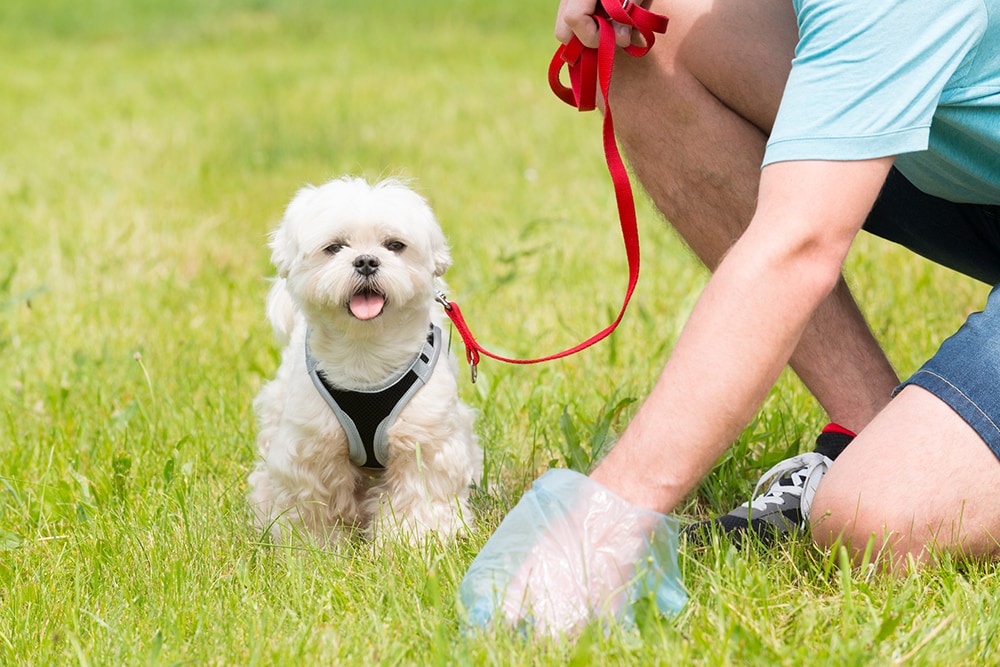
Cleaning up after your dog helps to keep the environment clean and reduces the risk of diseases spreading to people and other animals.
- Always pick up dog poop and dispose of it properly.
- Dog poop should be picked up, even in your own yard, and especially in areas where children may play.
Prevent dog scratches and bites
Dog bites can cause pain and injury, but they can also spread germs that cause infection. Nearly 1 in 5 people bitten by a dog requires medical attention. Any dog can bite especially when scared, nervous, eating, or when playing or protecting toys or puppies. Dogs may also bite when they aren't feeling well and want to be left alone. Any dog can bite, but most dog bites are preventable, and there are many things you can do at home and within your community to help prevent them. Practicing the safe handling tips below can help you avoid dog bites.
Know the risks
Children are more likely than adults to be bitten by a dog, and when they are, the injuries can be more severe. Most dog bites affecting young children occur during everyday activities and while interacting with familiar dogs. Having a dog in the household is linked to a higher likelihood of being bitten than not having a dog. As the number of dogs in the home increases, so does the likelihood of being bitten. Adults with two or more dogs in the household are five times more likely to be bitten than those living without dogs at home. Among adults, men are more likely than women to be bitten by a dog.
How to prevent dog bites and scratches
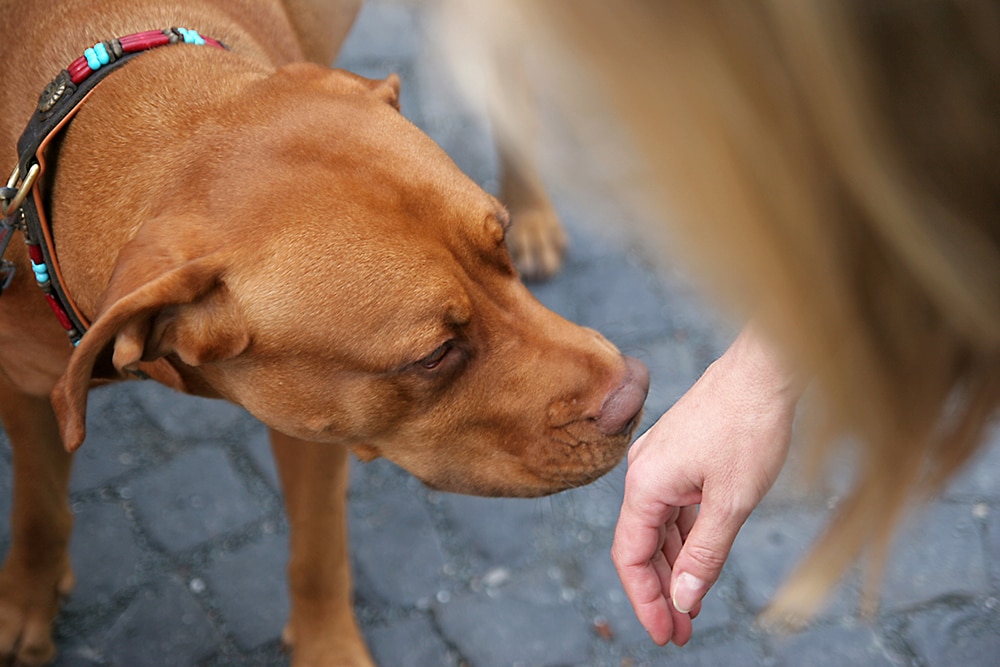
- Always ask if it is ok to pet someone else's dog before reaching out to pet it even if the dog appears friendly.
- Let the new dog approach you first.
- When a new dog approaches you, remain still to allow the dog to feel comfortable.
- Always make sure a dog has seen you and sniffed you before you reach out to pet it.
- Do not approach an unfamiliar dog, even if it seems friendly or healthy. Call animal control if you see a dog in trouble or a dog running loose.
- Do not let young children play with dogs without supervision, even if the child has met the dog before or if the dog is your family pet.
- Responsible pet ownership, including socializing your dog and using a leash in public, can help prevent dog bites.
- Do not disturb a dog while it is eating, sleeping, or caring for puppies
- Do not pet a dog if it appears to be hiding or seeing time alone.
- Do not continue petting a dog if it seems scared, sick, or angry.
- If a dog knocks you over, curl into a ball with your head tucked and your hands over your ears and neck. You can also put a purse, bag, or jacket between you and the dog.
- Do not encourage your dog to play aggressively or roughhouse.
- Do not panic or make loud noises, and never run from a dog.
- Do not try to break up dog fights.
If an unfamiliar dog approaches you, stay still and be calm, and avoid direct eye contact with the dog. Say "no" or "go home" in a firm, deep voice and stand with the side of your body facing the dog. Slowly raise your hands to your neck with your elbows in and wait for the dog to pass or slowly back away.
What to do if you are bitten or scratched by a dog

Germs can be spread from dog bites and scratches, even if the wound does not seem deep or serious.
- For minor wounds:
- Wash the wound thoroughly with soap and water.
- Apply an antibiotic cream.
- Cover the wound with a clean bandage.
- For deep wounds:
- Apply pressure with a clean, dry cloth to stop the bleeding. Then seek medical attention.
- If you cannot stop the bleeding or you feel faint or weak, call 911 or your local emergency medical services immediately.
See if a healthcare provider if:
- The wound is serious or deep (uncontrolled bleeding, extreme pain, loss of function)
- The wound becomes red, painful, or swollen, or if you develop a fever
- If you don't know if the dog has been vaccinated against rabies
- If it has been more than 5 years since your last tetanus shot and the bite is deep
- Let the healthcare provider know that you were bitten by a dog. The healthcare provider may consult with your state or local health department to help you decide if you need treatment known as rabies postexposure prophylaxis (PEP).
Report the bite
- Because anyone who is bitten by a dog is at risk of getting rabies, consider contacting your local animal control agency or police department to report the incident, especially:
- If you don't know if the dog has been vaccinated against rabies.
- If the dog appears sick or is acting strangely.
- If possible, contact the owner and ensure the animal has a current rabies vaccination. You will need the rabies vaccine license number, name of the veterinarian who administered the vaccine, and the owner's name, address, and phone number.
How to keep pet dogs healthy
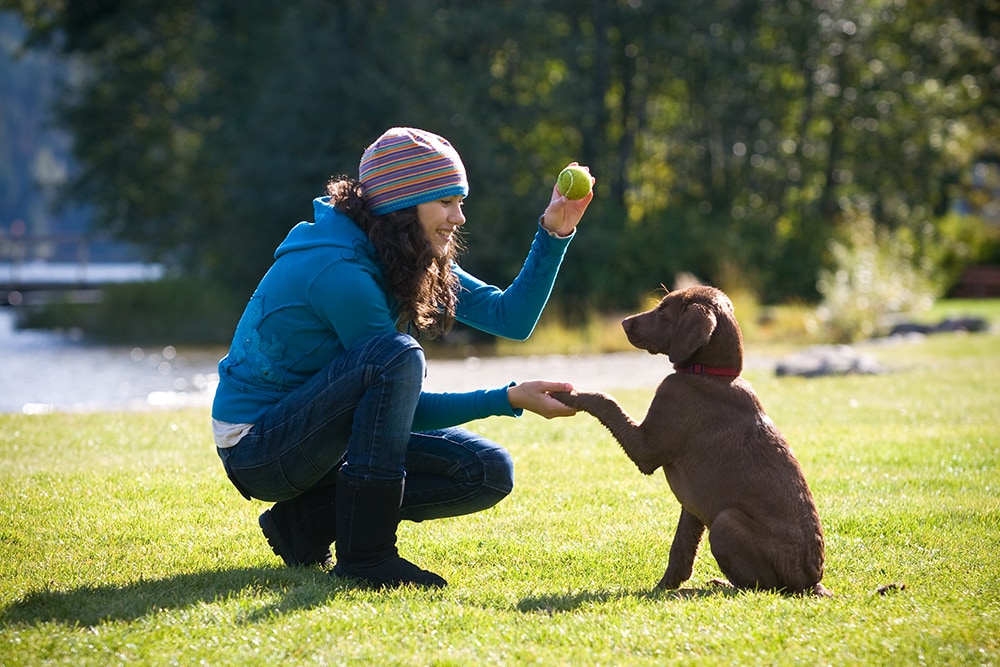
Keeping your dog healthy helps to keep you and your family healthy. To learn how to stay healthy around dogs, visit the Healthy People section.
Before choosing a dog
- Research and learn how to properly care for a dog before buying or adopting.
- Ask your veterinarian about the proper food, care, exercise, and environment that are best for the dog you are selecting.
- Be aware that dogs can sometimes shed certain germs in their feces (poop) that might make people sick, even when dogs appear healthy. Plan to clean up after your pet frequently.
- Research any laws regarding ownership of certain breeds in your area before buying or adopting a dog.
How to choose a dog
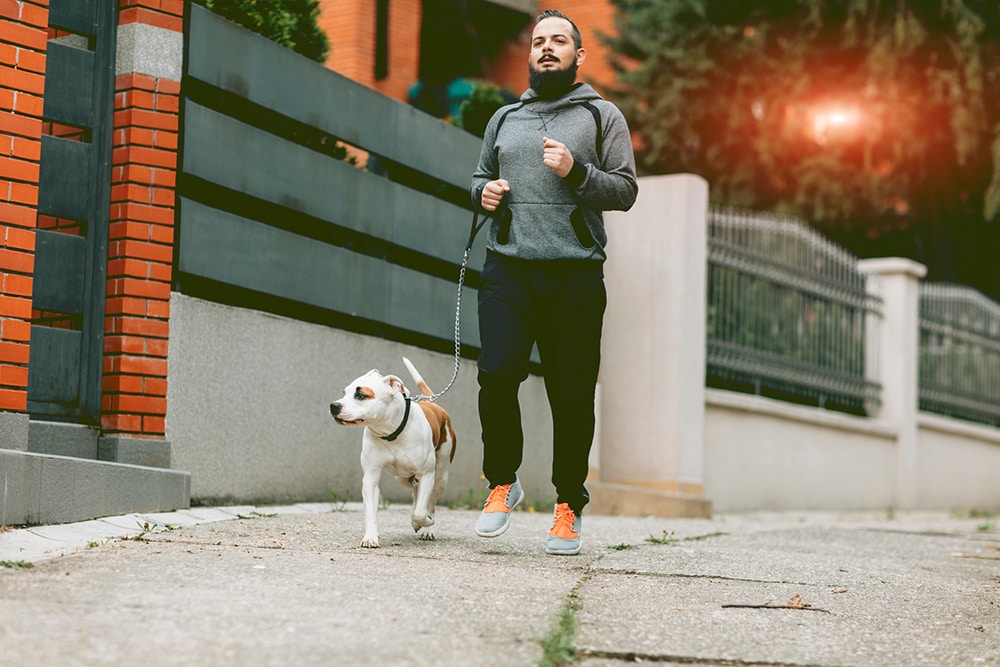
- Match a dog's attitude, temperament, size, and activity level with your family, your home, and the amount of time you have to spend with your pet.
- Pick a dog that is bright, alert, and playful. Dogs and puppies should have shiny, soft fur that is free of poop.
- Signs of illness in a dog include appearing sluggish or depressed, having diarrhea, abnormal breathing, and fluid running from its eyes or nose.
- Make sure to take your new dog or puppy to the veterinarian within a few days to a week after adoption.
If your dog becomes sick or dies soon after purchase or adoption, take your dog to the veterinarian promptly and inform the pet store, breeder, or rescue organization about the pet's illness or death. Make sure to tell your veterinarian if the pet was adopted internationally. Thoroughly clean the area your pet lived in.
How to house your dog
- It is important to provide a safe, warm, and comfortable environment for your dog.
- If your dog will be housed outside, provide shelter such as a doghouse for when it is cold or rainy and shade for when it is hot. Protecting your dog from the changes in weather will reduce stress and help keep it healthy.
- Make sure your dog has access to fresh, clean water and food every day.
- Consider fencing in your yard. A fence gives your dog room to play but will also protect it from wild animals and reduce the risk of strangers interacting with your dog.
- It is not recommended to keep dogs tied up outside. Tying dogs outside is illegal in some areas. In addition, dogs that are tied up are more likely to bite than those roaming freely in a fenced yard.
- If your dog uses a kennel or doghouse, make sure to clean it regularly to prevent build-up of poop.
Feed your dog safely
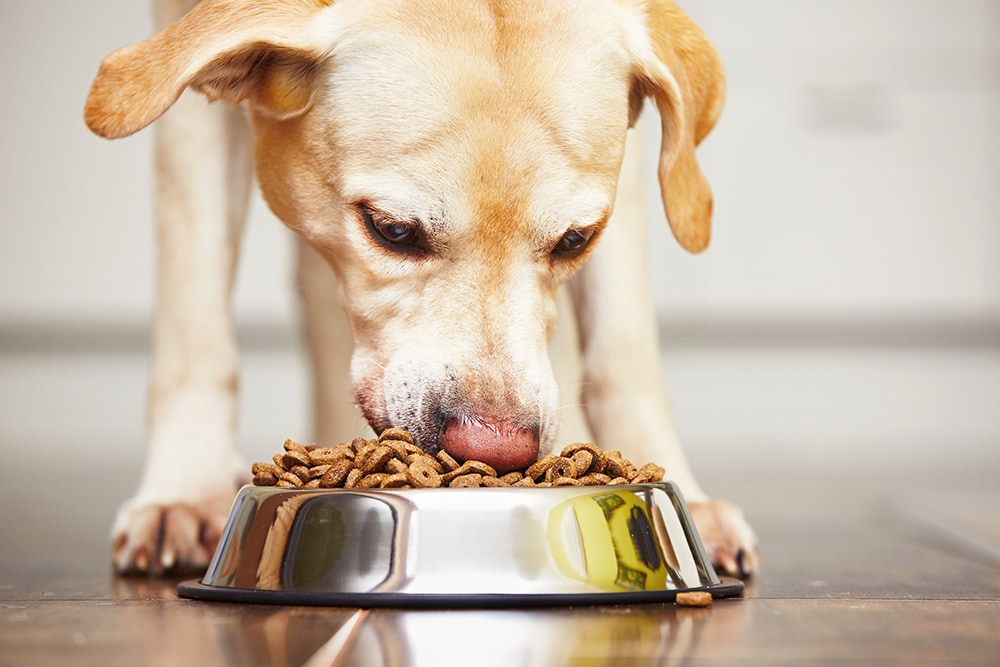
- Do not feed dogs in areas where human food is prepared or eaten.
- Always wash your hands after touching dog food or feeding your dog.
- Store dog food separately from human food.
- Do not feed your dog a raw diet. Germs like Salmonella and Listeria have been found in raw pet foods, even packaged foods sold in stores. These germs can make you and your pet sick.
- Talk to your veterinarian about the right type of food for your dog.
Read more about pet food safety.
Monitor your dog's health
- Take your dog to the veterinarian regularly to keep it healthy and prevent infectious diseases.
- Talk to your veterinarian about preventive treatments for fleas, ticks, heartworms, and other parasites.
- Make sure to clean up any dog urine, poop, or vomit in the house immediately, and disinfect the area well. Use disposable gloves and make sure to wash your hands thoroughly afterwards.
- Contact your veterinarian if you notice any signs of illness in your pet. Keep in mind that even a dog that looks healthy can spread germs to people and other animals.
Get your dog vaccinated
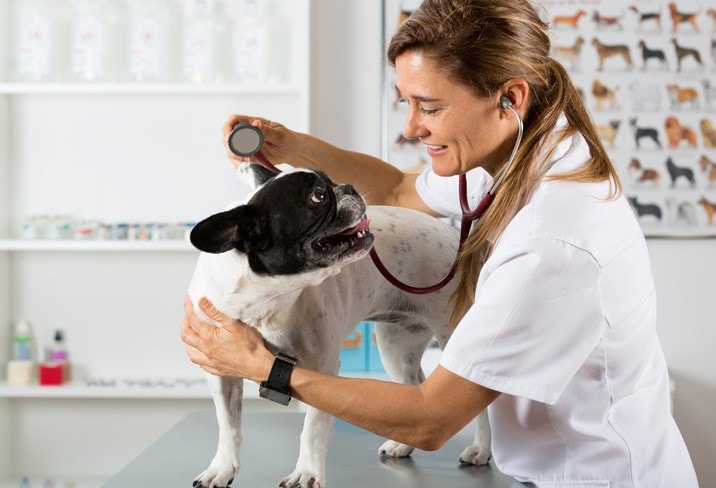
- Keep your dog up-to-date on routine vaccinations like rabies.
- Vaccines can help protect your dog from dangerous diseases and help them live a longer life.
- Tell your veterinarian about your dog's lifestyle, including whether it is often around other dogs or other animals, and ask about other vaccines you may need or want for your dog, like kennel cough.
Protect your dog from ticks
Talk to your veterinarian about:
- The best tick prevention products for your dog
- Tickborne diseases in your area
To further reduce the chances that a tick bite will make your dog sick:
- Check your dog for ticks every day, especially after they spend time outdoors. If you find a tick on your dog, remove it right away.
- Run your fingers through your dog's fur with gentle pressure to feel for any small bumps.
- Looks for ticks in the following areas:
- In and around the ears
- Around the eyelids
- Under the collar
- Under the front legs
- Between the back legs
- Between the toes
- Around the tail
- Reduce tick habitat in your yard.
What Can Cause Dogs to Have Fits
Source: https://www.cdc.gov/healthypets/pets/dogs.html